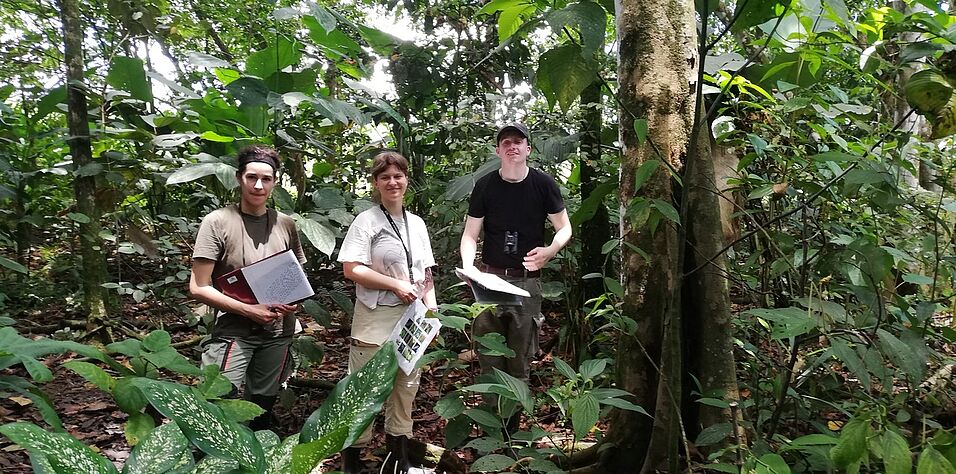Forests and trees can experience rapid growth in tropical climate, leading to the fixation of large quantities of CO2 out of the atmosphere when compared to other
regions. Hence, the protection of existing rainforests as well as converting unforested land into forested land are promising measures to tackle climate change and its
impact. In addition to reforestation, this land conversion can also take place as natural succession. Reforestation sites have been studied for years in the Tropical
Field Station La Gamba and its vicinity. The research helps to understand the process of reforestation as well as to learn from reforestation experiments and clear
uncertainties concerning tropical forests and trees. These studies have confirmed the rapid regeneration of tropical forests. Furthermore, they brought forward that this
process takes place in a particularly high rate in the humid conditions of La Gamba when compared to other tropical forests (Oberleitner et al. 2021; Poorter et al. 2021).
However, the documented fast recovery might be too optimistic, if only stands with fast forest regeneration are being investigated. On several deforested sites in Costa
Rica a fern (Dicranopteris) has established, impeding the succession of trees and therefore leading to major delays in the trees’ development. For this reason this
thesis aims to compare fern dominated sites with sites where rapid development has already been documented. The ferns can easily be distinguished from trees from
above, due to their lighter green colouring.
Since the differentiation between land covering vegetation can effortlessly be done from above, site development will be determined using remote sensing on top of data
collection in the field.
The development of Dicranopteris in Costa Rican secondary rainforests and its impact on tree development
Verwandte Dateien
- Activity_Report_Graeber.pdf 904 KB

v.l.n.r. Rosa-Maria Ronay, Paulina Schroeren und Stephan Gräber 2022 in La Gamba.
